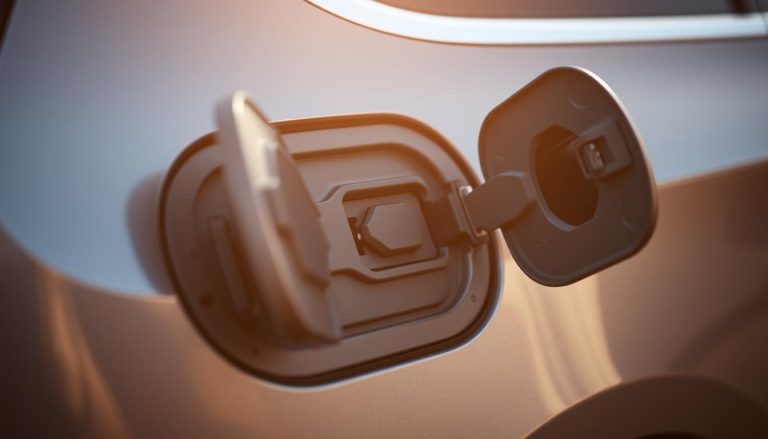A properly adjusted vehicle parking brake is crucial for safety, ensuring that your vehicle remains stationary when parked, especially on inclines.
A well-maintained parking brake adjustment can prevent accidents and reduce wear on other braking components.
In this article, we will guide you through the process of adjusting your vehicle’s parking brake with ease, providing a clear understanding of the steps involved.
Key Takeaways
- Understand the importance of a properly adjusted parking brake.
- Learn the steps to adjust your vehicle’s parking brake.
- Discover how a well-maintained parking brake can enhance safety.
- Find out how to prevent accidents with a correctly adjusted parking brake.
- Reduce wear on other braking components with proper parking brake adjustment.
Understanding Your Vehicle’s Parking Brake System
Understanding the intricacies of your vehicle’s parking brake system is essential for maintaining safety on the road. The parking brake system is a critical safety feature that prevents your vehicle from rolling or moving when parked, especially on inclines.
Types of Parking Brake Mechanisms
There are primarily two types of parking brake mechanisms: drum-in-hat and rear disc brake systems. The drum-in-hat system is integrated within the rear brake rotor and operates through a complex system of cables and levers. On the other hand, rear disc brake systems often utilize a cable-actuated mechanism to apply the parking brake. Understanding which type your vehicle has is crucial for effective maintenance.
The drum-in-hat system, while more complex, offers a robust braking performance. In contrast, rear disc brake systems are generally easier to inspect and maintain. Familiarizing yourself with your vehicle’s specific parking brake mechanism can help you identify potential issues early on.
Signs Your Parking Brake Needs Adjustment
Several signs indicate that your parking brake needs adjustment. If you notice excessive travel in the brake lever or pedal, it may be a sign that the brake needs adjustment. Additionally, if your vehicle rolls slightly when parked on an incline, it could indicate that the parking brake is not functioning correctly.
Other signs include unusual noises when applying the parking brake, such as grinding or clicking sounds, and visible wear on brake components. Regular inspection can help you catch these issues before they become major problems, ensuring your vehicle’s parking brake operates effectively.
Tools and Safety Preparations
Before you start adjusting your vehicle’s parking brake, it’s crucial to be prepared with the right tools and safety measures. Adjusting the parking brake is not just about tightening or loosening the cable; it’s about ensuring your vehicle remains safe and functional.
Essential Tools for the Job
To adjust your vehicle’s parking brake effectively, you’ll need a few essential tools. These typically include a socket wrench that fits your vehicle’s brake cable adjustment nut, pliers for gripping small parts, and potentially a repair manual specific to your vehicle’s make and model. Having these tools on hand will make the adjustment process smoother and more efficient.
- A socket wrench for adjusting the brake cable tension
- Pliers for handling small components
- A repair manual for specific instructions tailored to your vehicle
Safety Precautions Before Starting
Safety should always be your top priority when working on your vehicle. Before starting the parking brake adjustment, ensure your vehicle is on a level surface and apply the parking brake. Additionally, chock the wheels to prevent any movement during the adjustment process. It’s also a good idea to consult your vehicle’s repair manual for any specific safety recommendations.
How To Adjust Parking Brake: Simple and Effective Steps
The parking brake is a critical component of your vehicle’s safety features, and adjusting it is simpler than you might think. Proper adjustment ensures that your vehicle remains secure when parked, preventing potential accidents. In this section, we will guide you through the step-by-step process of adjusting your vehicle’s parking brake.
Step 1: Preparing Your Vehicle
Before starting, ensure your vehicle is parked on a level surface and apply the parking brake. Engage the transmission in park (for automatics) or first gear (for manuals). Chock the wheels to prevent the vehicle from rolling. This step is crucial for safety and will provide a stable environment for the adjustment process.
Step 2: Locating the Adjustment Mechanism
The location of the parking brake adjustment mechanism varies by vehicle make and model. Typically, it’s found under the center console or near the rear brakes. Consult your vehicle’s repair manual to locate the adjustment mechanism. Take note of the type of adjustment mechanism your vehicle has, as this will dictate the tools and steps required for adjustment.

Step 3: Rear Wheel Brake Adjustment
For many vehicles, adjusting the rear wheel brakes is a prerequisite for adjusting the parking brake. This involves removing the rear wheels to access the brake drums or rotors. Inspect the brake shoes or pads for wear and replace them if necessary. Adjust the brake shoes according to the manufacturer’s instructions to ensure proper clearance.
| Step | Description | Notes |
|---|---|---|
| 1 | Remove rear wheels | Use appropriate lug wrench |
| 2 | Inspect brake shoes/pads | Replace if worn beyond limits |
| 3 | Adjust brake shoes | Follow manufacturer’s instructions |
Step 4: Cable Tension Adjustment
Once the rear brakes are adjusted, focus on the parking brake cable tension. Locate the cable adjuster, typically found near the rear brakes or under the vehicle. Turn the adjuster to increase or decrease tension according to the manufacturer’s specifications. The goal is to achieve the correct tension where the parking brake engages fully without dragging the rear brakes.
Step 5: Securing All Components
After adjusting the parking brake, ensure all components are securely tightened. Check that the adjustment hasn’t loosened any bolts or nuts. Tighten any loose parts and verify that the parking brake operates smoothly. Test the parking brake several times to ensure it holds securely.
By following these steps, you can effectively adjust your vehicle’s parking brake, enhancing safety and preventing potential issues. Remember, if you’re not comfortable with this process, it’s always best to consult a professional mechanic.
Testing Your Parking Brake After Adjustment
Testing your parking brake after adjustment is a critical step to guarantee your vehicle’s safety on slopes or inclines. Proper testing ensures that the brake is functioning correctly and holding the vehicle in place as expected.
Stationary Testing Procedures
Begin by testing the parking brake on a level surface. Engage the parking brake and shift into neutral or park, depending on your vehicle’s transmission type. Check that the brake holds the vehicle firmly in place. If it doesn’t, you may need to revisit the parking brake adjustment process.

Dynamic Testing on an Incline
For a more thorough test, find a safe incline. With the vehicle facing uphill, engage the parking brake and release the service brake slowly. The vehicle should remain stationary. If it rolls, the brake cable tension might need further adjustment. Repeat this test facing downhill to ensure the brake holds in both directions.
Fine-Tuning Based on Test Results
Based on the test results, you may need to fine-tune the parking brake adjustment. If the brake is too loose, tighten the cable. If it’s too tight, loosen it slightly. Repeat the testing process until you achieve the desired holding force without excessive tension.
By following these steps, you can ensure your parking brake is functioning correctly, providing safety and peace of mind.
Troubleshooting Common Parking Brake Issues
Troubleshooting is an essential step in resolving persistent parking brake issues. Even after adjusting the parking brake mechanism, problems can arise that require a closer examination.
Brake Still Too Loose After Adjustment
If the vehicle parking brake remains too loose after adjustment, it may indicate worn-out brake shoes or a faulty adjustment mechanism. Inspecting these components and replacing them if necessary can resolve the issue.
Additionally, ensure that the brake cables are not damaged or frayed, as this can also affect the brake’s performance. Tightening or replacing the cables may be necessary.
Brake Too Tight or Dragging
A parking brake that is too tight or dragging can cause uneven wear on the brake shoes and potentially lead to overheating. Check the adjustment mechanism to ensure it is not over-tightened.
Also, inspect the brake shoes for wear and replace them if necessary. Proper lubrication of the brake’s moving parts can also help alleviate this issue.
Uneven Braking Force
Uneven braking force can be a sign of misaligned brake shoes or uneven wear. Inspecting the brake assembly and making necessary adjustments can help resolve this issue.
When to Seek Professional Help
If troubleshooting does not resolve the parking brake issues, it may be time to seek professional help. A mechanic can provide a more detailed inspection and repair or replace components as needed.
In conclusion, troubleshooting common parking brake mechanism issues requires patience and a systematic approach. By addressing these problems methodically, you can ensure your vehicle parking brake operates effectively and safely.
Conclusion
A properly adjusted parking brake is crucial for vehicle safety, preventing accidents and ensuring the car remains stationary on inclines. By following the brake adjustment steps outlined, vehicle owners can achieve a secure and reliable parking brake system.
Regular maintenance is key to extending the lifespan of the parking brake. This includes periodic checks and adjustments as needed. By doing so, drivers can avoid common issues such as a loose or dragging brake, ensuring a smooth and safe driving experience.
The parking brake adjustment process, while straightforward, requires attention to detail and adherence to safety protocols. By mastering this process, vehicle owners can enhance their vehicle’s overall safety and performance.
FAQ
What are the signs that my vehicle’s parking brake needs adjustment?
Signs that your parking brake needs adjustment include excessive travel in the brake lever, noticeable wear on brake components, or the vehicle rolling when parked on an incline.
What tools are required to adjust a parking brake?
Essential tools for adjusting a parking brake include a socket wrench, pliers, and potentially a repair manual specific to your vehicle’s make and model.
How do I test my parking brake after adjustment?
To test your parking brake, perform both stationary testing procedures, such as checking the brake’s holding force on a level surface, and dynamic testing on an incline.
What should I do if my parking brake is still too loose after adjustment?
If your parking brake remains too loose after adjustment, check for worn-out brake components, inspect the cable tension, and consult a repair manual for specific guidance.
How often should I check my vehicle’s parking brake?
Regularly checking your vehicle’s parking brake is crucial for safety; it is recommended to inspect and adjust the parking brake during routine maintenance checks.
Can I adjust the parking brake on any vehicle type?
While the general process of adjusting a parking brake is similar across many vehicles, the specific steps and mechanisms can vary significantly depending on the vehicle’s make and model.
What are the safety precautions I should take when adjusting my parking brake?
Before adjusting your parking brake, ensure the vehicle is on a level surface, apply the parking brake, and chock the wheels to prevent any movement during the adjustment process.
When should I seek professional help for parking brake issues?
If you encounter complex problems, such as uneven braking force, or if you’re unsure about any aspect of the adjustment process, it’s advisable to seek help from a professional mechanic.


